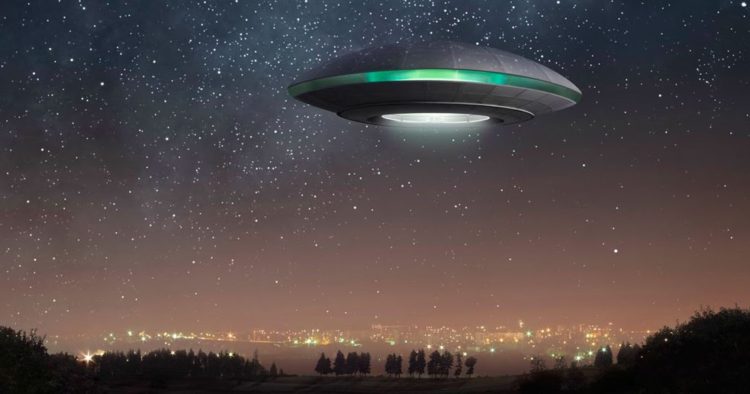By Aaron Miller-
Unidentified aerial phenomena (UAPs), more commonly known as UFOs, are experiencing a resurgence in public interest as reports of these enigmatic sightings continue to pour into the US government’s All-domain Anomaly Resolution Office.
With a potential influx of “hundreds, if not thousands” of reports expected in the near future, questions about the true nature of these unidentified objects and their possible implications have reached a fever pitch.
Sean Kirkpatrick, the director of the Pentagon’s All-domain Anomaly Resolution Office, recently revealed that his team has been inundated with a staggering number of UFO reports.
Since April 2023, the office has received around 800 reports of unidentified objects, marking a significant increase from the 650 reports recorded in August 2022.
Expressing skepticism about the true identity of the unidentified objects, Kirkpatrick told CNN that most of these reports involve benign objects, such as balloons or drones, adding that select few raise concerns about the possibility of foreign adversaries attempting to spy on the United States.
While not all UFO sightings are necessarily tied to espionage activities, Kirkpatrick acknowledged that “there are some indicators that are concerning that may be attributed to foreign activity.”
However, he was unable to definitively state what the foreign activity is.
He emphasizes the need to scrutinize these reports closely, as they could be indicative of more than meets the eye.
Significant in the increase in reports is the involvement of the Federal Aviation Administration, which monitors airspace around US airports. The FAA has started providing information to the Pentagon about UFO sightings in the vicinity of airports, further contributing to the rise in reported incidents.
Kirkpatrick explained that not all of these reports require in-depth investigation. Around 2-4% of cases are deemed truly anomalous and necessitate further examination.
In order to address these more critical incidents, Kirkpatrick’s office has cooperated with law enforcement agencies and, if needed, counterintelligence units.
The exact identity and intentions of these UFOs remain elusive, with Kirkpatrick conceding that they can be difficult to definitively identify.
He indicated that his office is “looking at some very interesting indicators,” but the uncertainty surrounding these sightings is a source of concern for national security.
When asked if the Pentagon could positively attribute an unidentified object to a foreign adversary, Kirkpatrick’s response is enigmatic. “There are ways to hide in our noise that always concern me,” he says, alluding to the extraneous readings picked up by US radars and sensors.
The implications of these sightings, particularly when they suggest foreign involvement, have raised national security concerns. As the UFO phenomenon continues to perplex and fascinate the public, it also presents the government with a complex challenge.
Kirkpatrick acknowledges that the situation should have been addressed more directly and comprehensively years ago.
This latest surge in UFO reports is not the first instance of heightened interest in UAPs. The Biden administration established a formal office to investigate such reports, leading to a significant uptick in public attention to the subject.
A congressional hearing on the matter in July further fueled the public’s fascination with UFOs, with some individuals making sensational claims about unidentified alien objects in government possession and “non-human” pilots operating these craft.
Despite the captivating nature of these claims, Kirkpatrick remains grounded in his approach to the phenomenon. He insists there is “no evidence that suggests anything extraterrestrial in nature” and calls for cooperation with individuals who may have valuable information on these sightings.
As the Pentagon prepares to receive an influx of new reports through two forthcoming portals – one for historical sightings and the other for public submissions – the government’s approach to handling these mysteries will undoubtedly evolve.
The historical sightings portal, set to open soon, aims to validate or refute past reports, potentially providing insights into recurring patterns or identifying recurring hoaxes.
However, the public portal, set to launch several months from now, is expected to flood the system with countless new reports. Kirkpatrick is confident that a sophisticated system will streamline the process of matching known objects to public reports, facilitating the prompt dismissal of identified sightings.




